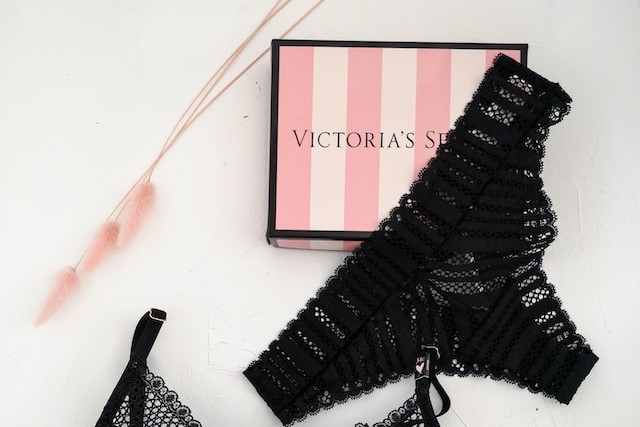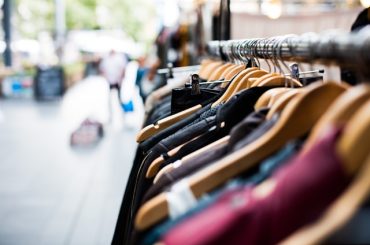Before we dive deep into the PESTEL analysis, let’s get the business overview of Victoria’s Secret. Victoria’s Secret is an American retailer known primarily for women’s lingerie, beauty products, accessories, and other apparel. Here’s a general business overview of Victoria’s Secret:
- History: Victoria’s Secret was founded in 1977 by Roy and Gaye Raymond in San Francisco, California. Initially, it was conceived as a place where men could feel comfortable buying lingerie, in contrast to the department store experience of the time.
- Growth and Popularity: Victoria’s Secret dominated the U.S. lingerie market over the decades. Much of its success and popularity can be attributed to its annual fashion show, the “Victoria’s Secret Fashion Show,” a globally televised event showcasing top models (often referred to as “Angels”) wearing elaborate lingerie and accompanied by top musical performances. The show ran from 1995 to 2018.
- Branding: Victoria’s Secret built a brand around the idea of fantasy and luxury. The stores, the catalog, and the annual fashion show all emphasized an aspirational, glamorous image.
- Diversification: The brand expanded its product line over time to include loungewear, swimwear, beauty products, and perfumes. They also introduced PINK, a sub-brand targeted towards younger women and college-aged students.
- Rebranding and Restructuring: In response to the challenges, Victoria’s Secret began to rebrand and shift its image. The company started to include a more diverse group of women in its marketing. In 2021, Victoria’s Secret announced a significant rebranding effort, phasing out the “Angels” in favor of a new group of spokeswomen, the “VS Collective,” representing a more comprehensive range of backgrounds and achievements.
- Ownership: For years, Victoria’s Secret was owned by L Brands, a retail conglomerate. However, in 2020, a deal was announced to sell a majority stake in Victoria’s Secret to the private equity firm Sycamore Partners. Although this deal was later called off due to the COVID-19 pandemic, in 2021, L Brands decided to split, making Victoria’s Secret an independent, publicly traded company.
- Financial Performance: The Company reported net sales of $6.344 billion for the full year 2022, a decrease of 6% compared to net sales of $6.785 billion in 2021. The company reported a net income of $348 million, or $4.14 per diluted share, for the full year 2022. This result compares to net income of $646 million, or $7.18 per diluted share for 2021.
Here is the PESTEL analysis of Victoria’s Secret
A PESTEL analysis is a strategic management framework used to examine the external macro-environmental factors that can impact an organization or industry. The acronym PESTEL stands for:
- Political factors: Relate to government policies, regulations, political stability, and other political forces that may impact the business environment.
- Economic factors: Deal with economic conditions and trends affecting an organization’s operations, profitability, and growth.
- Sociocultural factors: Relate to social and cultural aspects that may influence consumer preferences, lifestyles, demographics, and market trends.
- Technological factors: Deal with developing and applying new technologies, innovations, and trends that can impact an industry or organization.
- Environmental factors: Relate to ecological and environmental concerns that may affect an organization’s operations and decision-making.
- Legal factors: Refer to the laws and regulations that govern businesses and industries.
In this article, we will do a PESTEL Analysis of Victoria’s Secret.
PESTEL Analysis Framework: Explained with Examples
Political
- Trade Policies: Victoria’s Secret sources many of its products from overseas manufacturers. Any political decisions or tensions that affect trade relations could impact the company’s supply chain. Tariffs, import/export restrictions, or trade wars could potentially increase the cost of goods the company sells.
- Regulations and Labor Laws: The countries where Victoria’s Secret sources its products may have different labor laws and standards. Political decisions regarding labor practices, minimum wages, or working conditions in these countries can affect manufacturing costs and the company’s public image.
- Consumer Protection Laws: Governments are increasingly focused on consumer rights and protection. Any regulation changes related to product quality, advertising standards, or data protection can impact how Victoria’s Secret operates and markets its products.
- Taxation Policies: Political decisions regarding corporate tax rates, overseas profit repatriation, or tax incentives can affect the company’s profitability. For instance, changes in U.S. tax law can have significant implications for the brand’s financial health.
Economic
- Consumer Spending Patterns: The overall health of the economy affects consumer confidence. In strong economic times, consumers may be more willing to spend on luxury and discretionary items, benefiting premium brands like Victoria’s Secret. Conversely, during economic downturns, there might be a decrease in spending on such items.
- Currency Fluctuations: Victoria’s Secret operates in various global markets, which exposes it to foreign exchange risks. Fluctuations in currency values can impact costs (like procurement) and revenues from overseas operations.
- Interest Rates: Changes in interest rates can influence consumer spending and borrowing. High interest rates reduce consumer purchasing power, whereas low-interest rates could spur spending.
- Inflation Rates: High inflation can increase the cost of goods for Victoria’s Secret, from raw materials to finished products. This could pressure the company to either absorb the additional costs or pass them on to the consumer, potentially affecting sales.
- Competition and Market Saturation: The economic landscape also determines the level of competition Victoria’s Secret faces. Economic conditions that favor new entrants or bolster existing competitors can challenge the brand.
- Supply Chain Costs: Economic factors can affect the costs of raw materials, manufacturing, and shipping. For example, fluctuations in oil prices can impact the cost of transporting goods, and rising labor costs in manufacturing hubs can increase production expenses.
- Real Estate Prices: For a retailer like Victoria’s Secret, with physical stores, the costs of leasing or buying property for their stores can be a significant expense. Economic conditions can influence these real estate prices and, thus, the company’s expansion or contraction decisions.
Sociocultural
- Changing Beauty Standards: Societal perceptions of beauty have evolved over the years. The rise of body positivity movements and increasing demand for representation of diverse body types, ethnicities, and ages in the fashion and beauty industry has significant implications for brands like Victoria’s Secret, which historically promoted a specific beauty ideal.
- Gender Sensitivities: There’s a growing awareness and conversation around gender fluidity and inclusivity. Brands are expected to be more sensitive to gender norms, stereotypes, and biases, which may affect Victoria’s Secret’s product lines and marketing strategies.
- Cultural Appropriation Concerns: Victoria’s Secret has faced criticism in the past for its fashion shows that incorporated elements from various cultures. As cultural appropriation becomes a more prominent topic, brands must be more careful and respectful in using cultural symbols and elements.
- Demand for Comfort: There’s a noticeable shift in preference from highly structured lingerie to more comfortable options, like bralettes and sports bras. This shift has implications for product design and offerings.
- Digital Influence & Social Media: The influence of social media influencers and celebrities on fashion trends and purchasing decisions can’t be overlooked. Brands must be present and active in these digital spaces to stay relevant.
- Health and Wellness Trend: An increased emphasis on health, wellness, and self-care in society might affect consumer choices, leading to a preference for products that align with these values.
- Economic Empowerment & Independent Women: As more women become economically empowered and prioritize their careers, their needs, and preferences in terms of fashion and comfort change.
Technological
- E-Commerce Growth: With the rise of online shopping, Victoria’s Secret must have a robust e-commerce platform that offers a seamless shopping experience. Investing in technology that ensures quick load times, user-friendly interfaces, and secure payment options is crucial.
- Virtual Fitting Rooms: Advanced technology now allows for virtual fitting rooms, where customers can see how products might look on them without physically trying them on. Implementing such technology can enhance the online shopping experience.
- Data Analytics: The use of big data can provide insights into customer preferences, buying patterns, and trends. By leveraging data analytics, Victoria’s Secret can offer personalized recommendations, enhance marketing strategies, and optimize inventory management.
- Supply Chain Automation: Technologies like AI and IoT can be used to streamline and optimize the supply chain, ensuring timely deliveries, reducing waste, and managing inventory more effectively.
- Chatbots and AI-driven Customer Service: To provide real-time assistance to online shoppers, AI-driven chatbots can be employed. This enhances the shopping experience and provides valuable customer queries and concerns data.
- Sustainable Technologies: As sustainability becomes more crucial, technologies that allow for eco-friendly production, sustainable fabrics, and waste reduction can be vital for the brand’s long-term vision.
- Contactless Payments: In physical stores, offering contactless payment options, considering health and safety concerns (especially post-COVID), can enhance the in-store shopping experience.
Environmental
- Sustainable Fabrics: As consumer consciousness about the environment grows, there’s a push towards using eco-friendly and sustainable fabrics. Victoria’s Secret can face pressure to source materials that are both high-quality and environmentally friendly.
- Waste Management: Packaging and product waste are significant concerns in the retail industry. Using recyclable or biodegradable packaging, reducing product waste, and implementing recycling programs can be critical steps for Victoria’s Secret.
- Water Usage: The textile industry is known for its high water consumption. Ensuring sustainable water usage practices, especially in the production of garments, is becoming increasingly important.
- Chemical Usage: The use of dyes and chemicals in clothing production can be harmful to the environment. Victoria’s Secret might be urged to adopt practices that minimize the use of these chemicals or switch to eco-friendly alternatives.
- Energy Consumption: The energy consumed in stores, offices, and during production can be significant. Switching to renewable energy sources or implementing energy-saving measures can reduce costs and appeal to eco-conscious consumers.
- Supply Chain: Ensuring suppliers and partners adhere to environmentally friendly practices can be crucial for the brand’s image. Auditing and selecting suppliers based on their environmental practices can be a strategy.
- Animal Rights: Some of Victoria’s Secret products might use materials sourced from animals (like certain types of silk). Addressing concerns related to the ethical treatment of animals and sourcing materials responsibly is essential.
- Eco-Friendly Marketing: Campaigns highlighting the brand’s environmental commitment can resonate well with consumers. Such campaigns can help in building trust and enhancing brand reputation.
Legal
- Labor and Employment Laws: Victoria’s Secret must ensure compliance with labor laws in every country. This includes adhering to minimum wage standards, working conditions, overtime payments, and other employment rights.
- Consumer Protection Laws: Laws related to product safety, advertising standards, and consumer rights must be adhered to. Any false claims or misleading advertisements can lead to legal penalties.
- Intellectual Property: As a major brand, Victoria’s Secret has to protect its designs, logos, and brand identity. This means ensuring trademarks, copyrights, and patents are secured and regularly renewed and taking action against counterfeit products.
- Trade and Tariff Regulations: Import and export regulations, tariffs, and duties affect Victoria’s Secret products’ supply chain and pricing. These laws can vary based on political relationships between countries.
- Advertising and Promotions Laws: There are regulations in many countries about what can be shown in advertisements, especially for products like lingerie. Victoria’s Secret must ensure their marketing materials comply with these standards to avoid legal repercussions.
- Health and Safety Regulations: The company must ensure that all its products, especially cosmetics, adhere to safety regulations in various countries. This also pertains to the safety of their retail spaces for both customers and employees.
- Real Estate and Zoning Laws: They must comply with local real estate and zoning laws when opening new stores or distribution centers.
- Product Labeling and Quality Standards: Depending on the country, specific regulations about product labeling might exist, especially for beauty and personal care products.









